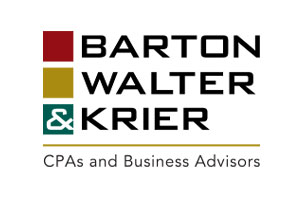Category: Tax Services
Preparing Your Business for the Long Term
November 20, 2022 | Barton Walter and Krier
Running a business is more than a 9-to-5 job. And with day-to-day elements to juggle in the present, it can be difficult to think about the future. But preparing your business for the long term is something to consider right now. Keep reading to learn what you should be doing and to uncover hints for succession planning. Succession Planning Rundown When it comes to business, no one can predict what will happen next week — or even tomorrow. That’s why it’s important to have a plan in place for if or when things change. Key players may retire, become ill and unable to work, or find new positions with other companies. With succession planning, you can prepare for the unexpected. The idea behind succession planning […]
Read MoreEmployee Retention Credit Basics
October 5, 2022 | Barton Walter and Krier
Many businesses took hits of all kinds during the COVID-19 pandemic. Under certain circumstances, businesses can benefit from keeping employees on their payroll when their bottom line might suggest otherwise. Keep reading to learn more about Employee Retention Credit basics and how to determine whether your business is eligible to take advantage of these credits. It’s not too late. Employee Retention Credit Essentials For the official explanation of the Employee Retention Credit (ERC), we turned to the IRS website. There, ERC is defined as a “refundable tax credit against certain employment taxes equal to 50 percent of the qualified wages an eligible employer pays to employees after March 12, 2020, and before January 1, 2021.” There is a $7,000 ceiling on qualified wages (including health […]
Read MoreWhat CPAs Do in the Tax Off-Season
June 1, 2022 | Barton Walter and Krier
The narrow, early year window for filing taxes is likely when you rely most on your tax professional. But these numbers virtuosos keep busy with a host of duties after filing deadlines, too. Ever wonder what CPAs do in the tax off-season? Keep reading to find out how they keep the gears turning and client financials in order throughout the year. Countless Capabilities Beyond Taxes Certified public accountants do more than crunch numbers on your Form 1040. They are dependable advisors that provide a litany of services to help clients reach their individual or business financial goals. CPA Steve Hagstrom of Barton, Walter & Krier shared insight into some of the lesser-known responsibilities tax professionals handle when they’re not calculating and filing a client tax […]
Read More

